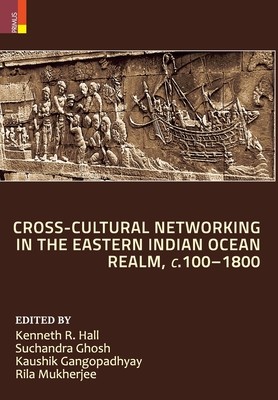
- We will send in 10–14 business days.
- Publisher: Primus Books
- ISBN-10: 9352906969
- ISBN-13: 9789352906963
- Format: 15.6 x 23.4 x 2.5 cm, kieti viršeliai
- Language: English
- SAVE -10% with code: EXTRA
Cross-Cultural Networking in the Eastern Indian Ocean Realm, c. 100-1800 (e-book) (used book) | bookbook.eu
Reviews
Description
Cross-Cultural Networking in the Eastern Indian Ocean Realm examines the history of the Bay of Bengal and beyond, as initially documented in archaeological recoveries from AD 100 to AD 900 and subsequently the variety of regional historical evidence that demonstrates India's eastern Indian Ocean maritime and northern overland connections to the nineteenth century. In sum, the book highlights the importance and variety of consequence in east-coast India's linkage with the coastlines of the Bay of Bengal and the extended eastern Indian Ocean, especially India's eastern maritime and overland networking with South-East Asia and China. In the eighth century post-Gupta era the Buddhist religious centre at Nalanda in north-west Bengal assumed a major role as the destination of Indian and international Buddhist pilgrims who arrived by sea and land to study at Nalanda, and returned to promote Buddhist and Hindu religious and cultural exchanges in wider India and Sri Lanka, South-East Asia, and China through the fifteenth century. The book details India's long-term historical relationships with the legendary Sumatra-based Srivijaya thalassocracy and its successors in the Straits of Melaka region, sequential Vietnam coastline-based polities c.600-1800s, and the Andaman Islands and Tibet, as populations in northern and eastern Asia selectively localized South Asian culture.
EXTRA 10 % discount with code: EXTRA
The promotion ends in 22d.07:14:29
The discount code is valid when purchasing from 10 €. Discounts do not stack.
- Publisher: Primus Books
- ISBN-10: 9352906969
- ISBN-13: 9789352906963
- Format: 15.6 x 23.4 x 2.5 cm, kieti viršeliai
- Language: English English
Cross-Cultural Networking in the Eastern Indian Ocean Realm examines the history of the Bay of Bengal and beyond, as initially documented in archaeological recoveries from AD 100 to AD 900 and subsequently the variety of regional historical evidence that demonstrates India's eastern Indian Ocean maritime and northern overland connections to the nineteenth century. In sum, the book highlights the importance and variety of consequence in east-coast India's linkage with the coastlines of the Bay of Bengal and the extended eastern Indian Ocean, especially India's eastern maritime and overland networking with South-East Asia and China. In the eighth century post-Gupta era the Buddhist religious centre at Nalanda in north-west Bengal assumed a major role as the destination of Indian and international Buddhist pilgrims who arrived by sea and land to study at Nalanda, and returned to promote Buddhist and Hindu religious and cultural exchanges in wider India and Sri Lanka, South-East Asia, and China through the fifteenth century. The book details India's long-term historical relationships with the legendary Sumatra-based Srivijaya thalassocracy and its successors in the Straits of Melaka region, sequential Vietnam coastline-based polities c.600-1800s, and the Andaman Islands and Tibet, as populations in northern and eastern Asia selectively localized South Asian culture.


Reviews